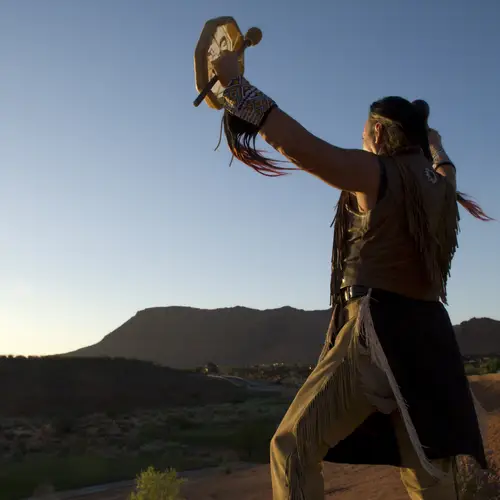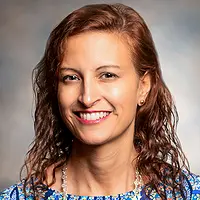Editor’s Note: As Head of Global Diversity, Equity & Inclusion, Kristina Brunelle writes periodic messages for RTI staff, encouraging us to reflect on our lived experiences with structural and interpersonal bias, and how we can foster a culture of belonging at work and beyond. We invite the Insights audience to join us in the same spirit of reflection.
As a child, my experience of the American holiday of Thanksgiving represented a long car ride to a relative’s home that always seemed VERY far away (no matter whose house it was held at). We were required to get dressed up and be on our best behavior. Upon arrival, our extended family members would ooh and ah about how much we’d grown, ask us how school was, and then leave my brother and me to our own devices (not electronic ones, this was the 80’s) while they finished the food preparations so we could eat. The turkey, the mashed potatoes, the green beans, sweet potatoes, cranberry sauce and pecan, pumpkin, and apple pies – my impression growing up was that Thanksgiving was about food and family (and for some – football).
At school, Thanksgiving was about how the Pilgrims had settled this country, fought some of the people they encountered, made friends with others, learned how to plant corn so they could survive the harsh winters of New England, and sat down to eat a big meal that ostensibly celebrated their survival and newly formed friendships with said friendly “Indians.” Thanksgiving was about surviving in a new world, conquering “the bad guys,” making friends with “the good guys” and still, the food. It was a decidedly narrow lens.
And then I learned more.
I don’t remember the exact moment it began to creep into my consciousness, but over the years, through a combination of conversations with different people, my own self-study, and exposure to multiple rich sources of information about Native Americans, I have come to think differently about what happened that day in 1621 ... and about the people who first populated these lands, and their current day descendants.
What should I know about the “First Thanksgiving,” in 1621?

The American Indian Smithsonian Museum
The First Thanksgiving is often portrayed as a friendly harvest festival where Pilgrims and generic, nameless “Indians” came together to eat and give thanks. In reality, the assembly of the Wampanoag peoples (a Native nation based in Massachusetts) and the English settlers in 1621 was about political alliances, diplomacy, and a pursuit of peace. The Wampanoag peoples had a long political history of dealing with other Native nations before the English arrived. The Wampanoag shared their land, food, and knowledge of the environment with the English. Without help from the Wampanoag, the English would not have had the successful harvest that led to the First Thanksgiving. However, cooperation was short lived, as the English continued to attack and encroach upon Wampanoag lands in spite of their agreements. Interactions with Europeans and Americans brought accelerated and often devastating changes to American Indian cultures."
Thousands of years before there was the United States or even “The Americas,” there was a body of land that was inhabited by more than 2,000 different tribal groups that formed well-developed, complex societies that valued community, cooperation, and stewardship of the land that allowed them to exist. They are credited with the creation of multiple everyday objects, some as simple as baby bottles to the much more complex cable suspension bridge.
But I didn’t learn those things in school. Mainstream media didn’t teach me those things. Hollywood primarily portrayed “Indians” as “savages” that were to be feared. The narrative was one that relished violence and ignited fear.
So how does one reconcile decades of one version of history and what it has represented with these new learnings? That is the question – now that I have this new information, what do I DO with it? How does it change the way I think and feel about the holiday, about the Pilgrims, and the indigenous people that walked this continent long before other societies made their way here (on their way to somewhere else), and who continue to live and work on this planet? How does it change the words I use, the decisions I make, the way I behave?
I’m careful about the way I speak and am working to be more respectful – e.g. “Let’s have a Pow-Wow about that” isn’t part of my vocabulary anymore. I no longer use the term “Indian” when I am talking about native/indigenous people. I only use it in reference to people from India. I’m gaining perspective directly from Native people about their lived experiences - including hearing from my colleague, Shannon Poirier, who shared that, “We’ve turned [Thanksgiving] into a celebration which I think also honors our ancestors – though we don’t forget what they endured, we choose not to live in that space. In my family, we think of the month of November as the season of giving, harvest, and remembrance.”
Like Shannon, I still recognize Thanksgiving. I gather with family and look back at the year to consider what I am thankful for - and I recognize that for many it may be a day of mourning, for the decimation of many nations that represent a multitude of rich cultures, languages, and beliefs. I acknowledge that my family will sit down to dinner on the traditional and ancestral homelands of the Occaneechi, Skaruhreh/Tuscarora, and Lumbee peoples. I’m teaching my children (and my relatives) to think critically about what the day represents, the histories we’ve been taught, and those we weren’t, in the hope that they will grow up with a broader view and a wider aperture.
This month being Native American Heritage Month, I encourage you to learn more about Native Americans and their rich history. Do some research, read a book, listen to a podcast, and explore the diversity of Indigenous peoples, nations, and cultures where you live. There’s a lot to learn – and a lot to unlearn.
Special thanks to Shannon Poirier for her review of this post.

